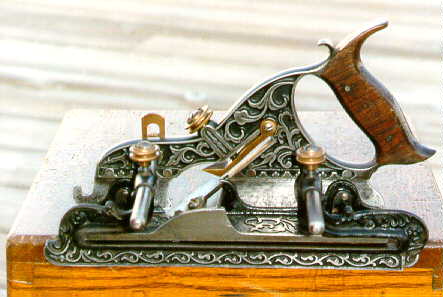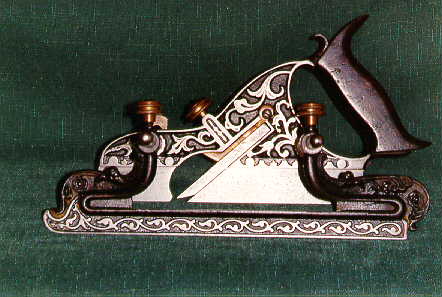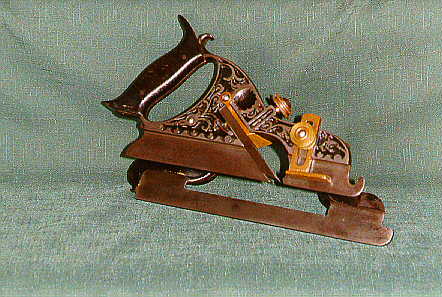The #41 combined plow, match and filletster plane.Note the distinctive curve of the body terminating with a "hook" at the tote. The fence screws and cutter clamp locking screw are of two piece construction. A brass thumb screw with 3 knurlings and a steel round headed screw through the center. The tote is secured with two pins, the tips of the tote are long and curve gracefully. The filletster cutter slot extends all the way through the top of the cutter. The cutter clamp chip deflector is brass, the deflector portion is shorter than in later models. |
 |



